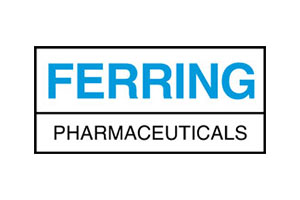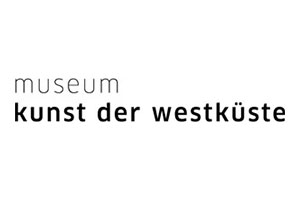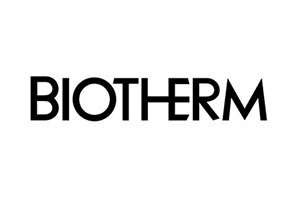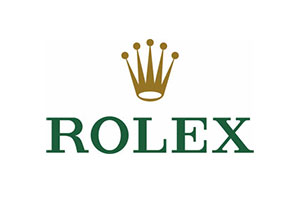NORTHBOUND EXHIBITION
at the Oceanographic Museum of Monaco
from 19 March to 19 June 2022
- Home
- EXPOSITION NORTHBOUND
NORTHBOUND EXHIBITION
The Museum Kunst der Westküste, located in Alkersum on the North Sea island of Föhr/Germany, is presenting the Northbound. Connected by the Sea exhibition at the Oceanographic Museum of Monaco from 19 March to 19 June 2022.
It brings together 24 paintings and photographs: historical and contemporary works which illustrate the role of the North Sea and the importance of preserving its coastal and marine areas.
The Northbound exhibition, scheduled as part of the Monaco Ocean Week, will be complemented by a scientific symposium entitled ‘The North Sea, a Sea of Solutions’, on 11 May 2022.
AN INVITATION ON A VOYAGE WITH 4 PORTS OF CALL
From the island of Föhr (Northern Germany) to the Netherlands, from Denmark to Norway.
The North Sea, a shelf sea in Northwestern Europe, is revealed by an exclusive selection of paintings and photographs from the collection of the Museum Kunst der Westküste. By means of the Northbound exhibition visitors embark on a visual voyage with 4 ports of call.
First stop are the Netherlands, where artworks such as Cool Early Spring on Scheveningen Pier by Isaac Israëls (1865–1934) are characterised by a warm grey-blue tonality. Then we head to Denmark, where the Skagen Painters, a group of Scandinavian artists who gathered in the village of Skagen in the northernmost part of Denmark, captured in their compositions the famous ‘blue hour’ specific to Danish outdoor painting since the 1880s. These atmospheric conditions are characteristic of Peder Severin Krøyers (1851-1909) renderings of Skagens beaches, such as Fishermen on the Beach at Skagen, Mild Summer Evening or Anna Ancher and Marie Krøyer on the Beach at Skagen – a work loaned by the Broere Charitable Foundation, a patron of the Oceanographic Institute. Contemporary artists are perpetuating this tradition by capturing in their photographs the twilight of ‘blue hour’ as we can see in Skagen VI (2008) by Joakim Eskildsen. In Norway, landscapes are romantic and emotive in conception, as example in A Norwegian Fjord in Summer by Georg Anton Rasmussen (1842-1914). Finally, the journey highlights the wonderful island of Föhr, in North Frisia (Germany), with its special cultural and scenic features. The seascape of Otto H. Engel (1866-1949) make Frisian culture around 1900 very vivid: whether through pictorial figures as in Evening Beach Scene, the interior of Frisian houses as in Frisian Parlour, or portrait painting as in In Front of the Mirror, which shows a woman from Föhr wearing traditional costume and readjusting her embroidered headscarf.
CONNECTED BY THE SEA
All the works presented have a common denominator: the sea. For centuries artists have challenged themselves to ‘capture’ this subject which stands never still. In constant motion, the sea changes continually in its overall appearance, its colours, its temperament. At times the sea captivates by its calm, smooth, reflective surface. At times it is immersed in green, blue or sometimes grey, interspersed with white crests formed by the waves.
By creating a dialogue between historical and contemporary artworks, the Northbound exhibition is inviting its visitors to explore the role played by the North Sea throughout history. The exhibition also illuminates the role the North Sea played and continues to play in the cultural links between the island of Föhr, Northern Germany, Denmark, the Netherlands and Norway. These regions are also linked by the threat posed by climate change, pollution and overfishing. By letting visitors appreciate the beauties and characteristics of the North Sea region, the aim is to draw their attention to the importance of protecting coasts and encourage as many people as possible to have a responsible attitude towards nature.
In order to allow different audiences to take full advantage of this exhibition, guided tours will be offered during school holidays as well as a treasure hunt, accessible online, for schoolchildren and their parents.
SCIENTIFIC SEMINAR « NORTHBOUND – THE NORTH SEA AND THE ARCTIC OCEAN: THREATS AND SOLUTIONS »
This seminar takes place in the context of the exhibition “Northbound. Connected by the Sea” by the Museum Kunst der Westküste (MKdW) at the Oceanographic Museum of Monaco, with the support of Prof. Dr. mult. h.c. Frederik Paulsen, founder of the MKdW. The two institutions are devoting a seminar to the North Sea and the Arctic Ocean, in the presence of HSH Prince Albert II of Monaco, on 11 May 2022 from 2.30 pm to 6 pm. The seminar’s Master of Ceremony will be Ms Leila Ghandi, award winning TV Host reporter, explorer, documentary film producer and director.
Coorganized by the Oceanographic Institute and the MKdW, with the support of Prof. Dr. h.c. mult. Frederik Paulsen, Founder of the MKdW, and directed by Prof. Dr. Peter Herzig, former Executive Director of GEOMAR Helmholtz Centre for Ocean Research Kiel the seminar will give the floor to exceptional keynote speakers: Tinka Murk, Professor at Wageningen University, The Netherlands, Mojib Latif, Climatologist and Senior Professor at GEOMAR, President of the German Association of the Club of Rome, Antje Boetius, Director of the Alfred Wegener Institute, Helmholtz Centre for Polar and Marine Research, Arved Fuchs, Explorer, Expedition Leader, Writer, Journalist, Film-maker, Ulrike Wolff-Thomsen, Director of the MKdW. Boris Herrmann, skipper of Team Malizia, will send us a friendly message from his regatta location.
The speakers will present solutions and positive impact initiatives put in place to preserve the extraordinary richness of the connected ecosystems of the North Sea and the nearby Arctic in response to the challenges of climate, biodiversity, and the development of a truly sustainable blue economy. They will highlight the role of both science and art and the power of dialogue in driving the general public, decision makers and the private sector towards the protection of the Ocean. The discussions will go beyond borders to provide a source of inspiration and a basis for dialogue and possible synergies between the North Sea and the Mediterranean Sea, two “laboratory seas” for the preservation of the World Ocean and the cultural links between people.
« NORTHBOUND – THE NORTH SEA AND THE ARCTIC OCEAN: THREATS AND SOLUTIONS »
SEMINAR, 11 MAY 2022 – 2.30 pm – 6.00 pm – Musée océanographique de Monaco – Public Event
About the Museum Kunst der Westküste
The Museum Kunst der Westküste opened its doors in 2009 in Alkersum, a village on the island of Föhr, in Germany. This non-profit museum was founded by the entrepreneur Frederik Paulsen, in the footsteps of his ancestors, themselves native to that village. It is attached to the historical inn, ‘Grethjens Gasthof’, a meeting place where many 19th century artists stayed and gathered together. Bringing this hub of social and artistic gathering back to life was the reason for creating the museum and its restaurant.
The Museum Kunst der Westküste seeks out, collects and presents works of art centred on the theme of sea and coast. Emphasis is placed on the west coast regions of the Netherlands, Germany, Denmark and Norway and 19th to 21st century art.
About the Oceanographic Museum of Monaco
This prestigious building, leaning against the legendary Rock of Monaco, is the ‘flagship’ of the Oceanographic Institute, Albert I, Prince of Monaco, Foundation, raising awareness in more than 650,000 visitors every year. It is famous not only for its remarkable architecture, but also because of its world famous aquarium, its exhibition events and its alliance of art with science. A place of culture and exchange, where experiences dealing with the protection of the Ocean are compared, the Oceanographic Institute also organises and hosts international symposiums.
About the island of Föhr
The green island of Föhr, situated in the North Sea, is in the middle of the Wadden Sea, a natural area classified as a UNESCO World Heritage Site, where twice a day a breath taking natural spectacle occurs when the tidal force causes the sea to recede for kilometres, exposing large areas of the seabed. The natural environment of the island is characterised by extensive beaches of white sand, vast green marsh lands and a mild maritime climate. To this day many traditional thatched Frisian houses are found on the island. Moreover, one of the “smallest” minority languages in Europe, ‘Föhr Frisian’ or ‘Fering’, is still alive and actively spoken by some 2,000 islanders. The young girls and women still wear their traditional costume on important occasions. These living Frisian traditions are closely linked to life at sea and off the coast Thus, traditional costumes have only developed for the women of Föhr as they were often alone, while the men plied the sea.











